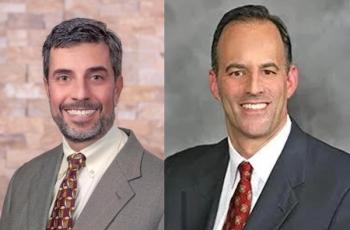
Calculating the financial costs of physician burnout
Physician burnout takes a huge toll on the bottom line.
The United States is in the middle of a physician burnout crisis, according to
However, not every medical system or practice is rushing to fix the problem. Christine Sinsky, MD, FACP, vice president of professional satisfaction at the American Medical Association (AMA) and a practicing general internist, says that among equally important considerations, physician burnout creates tremendous financial loss for any medical practice or system, and there’s really no time to wait to take a hard look at it.
“I think a lot of leaders are understandably reluctant to measure the degree of burnout in their workforce because they’re not sure what to do about it,” she says. But she urges tackling it head on. “How can you possibly afford not to?”
The economic costs of not addressing burnout are major. Sinsky says the data shows that it costs between $500,000 and $1 million to replace an existing physician. This, she feels, is a conservative figure. “It doesn’t include many, many other sources of financial costs to burnout.”
To help, the AMA has created a special online
Indirect financial costs get tacked on as physicians may respond to being burned out in a number of ways other than just “seeking greener pastures elsewhere,” she says. They may respond to burnout by staying in place but cutting back to part-time. “That’s expensive to an organization,” she says.
Or they may respond by being less productive or seeing fewer patients in their existing sessions. Worse, she says, “They may respond by providing less safe care. We know that care is safer when physicians are satisfied with their work, and that safety hazards add costs to the organization.”
Additionally, further consequences of a physician who leaves or provides inferior care is that patients may begin to leave, too.
So rather than willfully turning a blind eye to the burnout problem, or dealing with it case by case, Sinsky suggests that hospitals and practices first measure the burnout rate of their organization. The AMA offers a questionnaire developed by Mark Linzer, MD, to help do just that. “First measure and then second, weigh the costs of burnout to your organization. The cost will probably be fairly staggering to leadership,” she acknowledges.
While not every healthcare system has assessed burnout or made changes, Sinsky is optimistic that more will soon come on board out of necessity.
In fact, the AMA’s practice transformation website,
“The more evidence that we can build and the more awareness that we can foster, the more improvement patients will feel in terms of their care being delivered by people who come to work no longer feeling dejected and demoralized, but energized and empowered,” Sinsky says.
Newsletter
Stay informed and empowered with Medical Economics enewsletter, delivering expert insights, financial strategies, practice management tips and technology trends — tailored for today’s physicians.



















